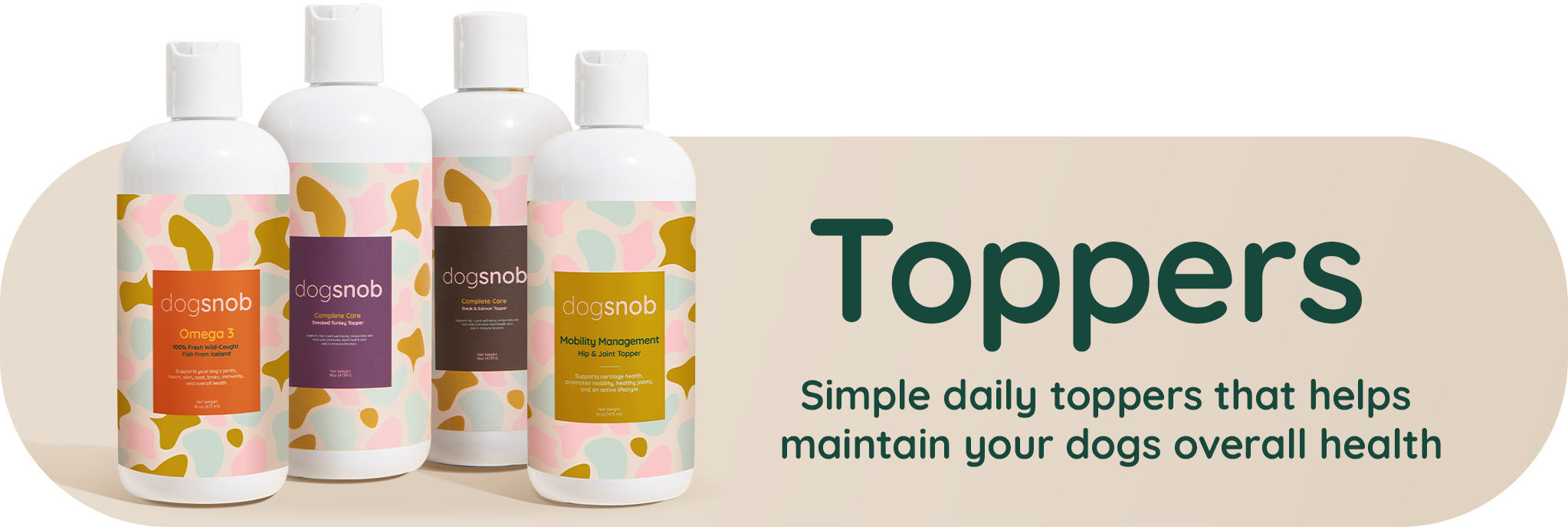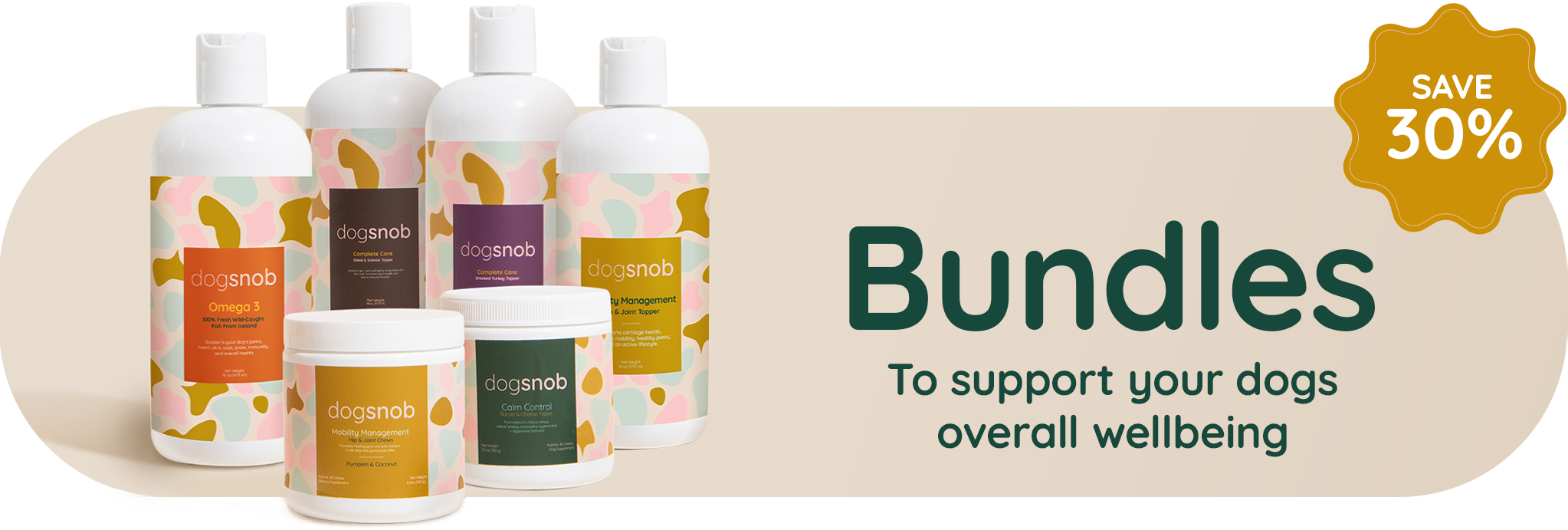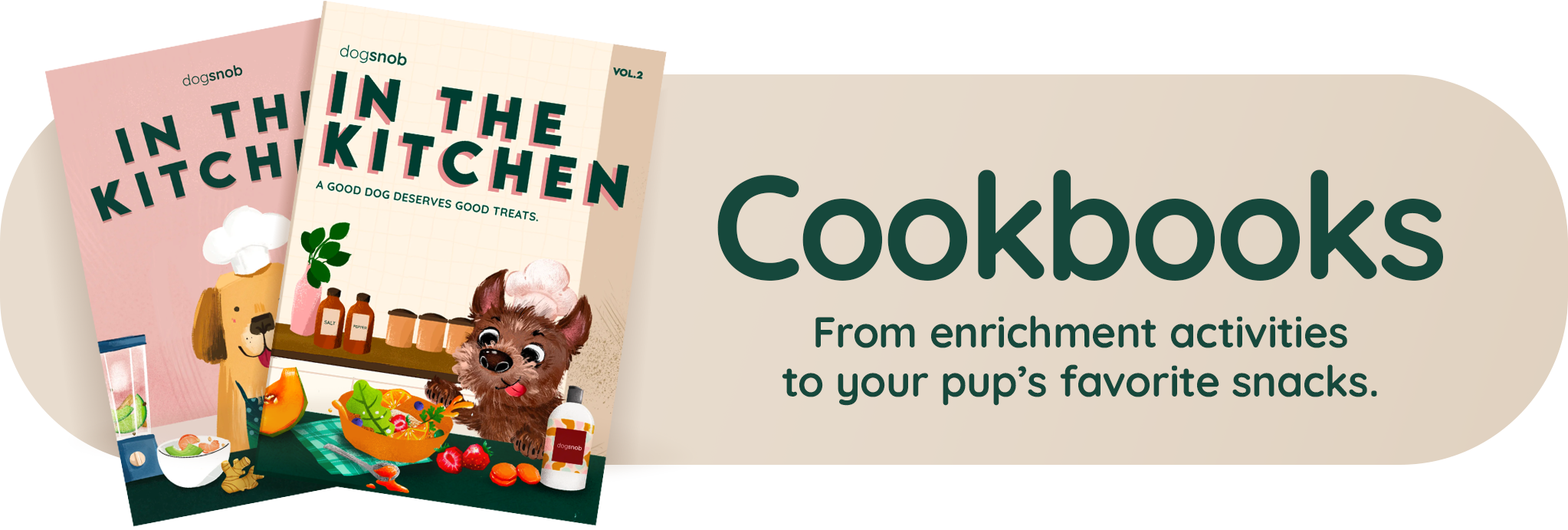Here is what anxiety in dogs is, how to see its signs and how to prevent it. Read on!
Anxiety is a frequent feature not just in humans but also in animals. You might be noticing some unusual behavior in your dogs when left alone, especially after being home together for a lengthy period of time working from home. Now that in-person work is coming back, One of the most frequent types of anxiety in dogs is separation anxiety.
Anxiety, like other harmful habits such as biting, barking, and chewing on anything in sight, may be cured. Anxiety can be completely eliminated, but it may also be controlled; under particular conditions.
How can you tell if your dog is anxious? What can you do to help a dog that is anxious? We're here to tell you all you need to know about dog anxiety, including the most prevalent causes, symptoms, and treatments. In addition, we'll go through the best anxiety-reduction strategies. This way, if your dog ever develops anxiety, you'll have all the information you need.
If you have an anxious dog, this piece is a must-read. We'll go through some tried-and-true strategies for helping your nervous dog and ensuring a happy, healthy life.
Dog anxiety causes
While it is unpleasant, it is a natural and healthy feeling. Dog anxiety may affect all breeds; however, it might range from one dog to the next. Although all dogs feel worried from time to time, if excessive amounts of anxiety are not addressed, a dog might develop an anxiety disorder. Dog anxiety, if left untreated, can develop into behavioral and other problems.
Anxiety may appear to appear out of nowhere at times, although it is generally triggered by a change in habit, surroundings, or activity. This is especially crucial today, when places reopen following COVID-19 shutdowns and your dogs have become accustomed to spending more time with you. When returning to work, the abrupt shift in habit can result in one of the most prevalent kinds of anxiety in dogs: separation anxiety.
But it isn't the only kind of anxiousness that dogs may have.
The most typical causes of anxiety in a dog include abandonment, loud sounds such as fireworks, dread of being alone at home, travelling, youngsters, or other pets.
The best method to treat your canine buddy is to find out what's causing the problem. Anxiety is frequently visible and easy to spot. Once you've determined the cause, you can determine what strategy will help your pet the most.

Signs of anxiety in dogs
As we mentioned above, anxiety can manifest itself in different forms. Finding out exactly what triggers your dog is essential to helping him/her . And analyzing what type of anxiety your dog has will give you a better idea of which path to follow.
Environmental anxiety. This is frequently shown as a dread of leaving the house or travelling to a certain area, such as a vet facility. Loud noises or frightening circumstances, such as sirens, alarms, fireworks, firearms, loud household appliances or thunder, can also create environmental anxiety.
Age-related anxiety affects senior dogs and is linked to loss of sight, memory, learning, perception, and awareness. Senior dogs are naturally confused and anxious as a result of this.
Separation anxiety can arise when you move to a new place, your dog is removed from you or other family members, or even when you change your schedule and routine. When people think of anxiousness in their pets, they usually think of this.
Common signs of anxiety in dogs
- Barking & howling when owner is not at home
- Shivering
- Panting
- Pacing
- Digging
- Escaping the yard
- Destroying furniture
- Urinating
- Drooling
- More subtle anxiety signs
- Lip licking
- Lifting a paw
- Looking away
- Depression
- Dog anxiety factors
- Separation anxiety and isolation
- Fear
- Loud noises
- Uncomfortable situation
- Activity levels
- Aging
- Insufficient nutrients
Keep an eye on these actions to determine whether they were a one-time occurrence or if they constantly return. If your pet only acts out on occasion (for example, digging a hole in the new garden), it might be because they were bored or didn't receive enough exercise that day.
If these are recurring habits and you're not sure if your dog is displaying additional indications of anxiousness, try installing a camera to monitor them while you're away.
How can I help my dog handle stressful situations?
Maintain a cool demeanor if your dog becomes nervous or anxious. Dogs catch up on our feelings, and if we become annoyed with them, they'll just keep doing what they're doing. Also, resist the urge to give them food or treats in an attempt to calm them down. They'll rapidly link "freaked out" behavior with a reward of some type.
Behavior modification
You may be able to desensitize your dog to the source of their worry in some circumstances. For example, suppose your dog is afraid of other dogs. In that case, you may start by introducing them to smaller, less scary animals, particularly less-threatening females, in a confined, neutral and controlled situation.
If your dog has separation anxiety ,try working to shift your dog's negative thought with being alone to a positive activity, by providing your dog with something he enjoys before leaving such as a frozen kong to keep him busy or a canine puzzle to keep him occupied while you are away .
If your dog is afraid of the car, try baby steps. Start by bringing him to the car and rewarding him, then go back inside or keep playing outside. Next time open the vehicle door and let him get in on his own, reward him when he gets in and then continue with fun activities. If you see that after a few tries, the dog seems more comfortable, close the door and sit with him for a few minutes without moving the vehicle and reward. The next step could be to take a small car ride around the block and come straight home. Keep taking smaller stages at the dog's pace to finally reach a point where the dog is no longer afraid of being in a moving vehicle for a more extended period.
Play and exercise
If your dog suffers from separation anxiety, the apparent solution is to never leave them alone. That is not a reality for most pet owners, so utilizing exercise as a bonding experience and a way to tire out your pet is frequently a simple solution! If you live in an apartment on a higher floor or you have colder seasons where your dog refuses to go out, or don't have a backyard, there are multiple solutions to exercising your dog in a small space.
- Use interactive toys like puzzles or sniffing matts.
- Chase some bubbles. Dogs with a strong prey attraction will love chasing them.
- Get a small dog treadmill. Treadmills are ideal for rain or excessively hot. or cold days when it is difficult for some breeds to exercise outdoors without overheating or being cold.
- Use a food toy like a kong. If your dog has to work to reach her food, the effort will tireher out while also preventing her from devouring her meal.
- Learn tricks, training your dog is an excellent technique to keep them interested and active in a confined environment. You can teach your dog to sit, stay, lie down, rollover, and other basic commands.
Because anxiousness can generate an excess of energy, taking your dog for a long walk or a game of ball before you leave might be beneficial. It is also beneficial to make lots of physical contact with them and communicate with them during this period. Like its human counterparts, exercise can help reduce stress by creating helpful endorphins.
Safe spaces
Just like when you brought your pup home for the first time, he will need a safe and cozy "doggy zone" Consider it an extended crate area; you want your dog to see their safe zone with the same enthusiasm as they do their crate. Many dog owners create a secure zone around their dog's crate. If you don't have a crate, pay attention to where your dog regularly lays down, this will give you an idea of his comfort zone.
By creating a unique location for your dog to retreat to when necessary, your dog will learn to self-soothe and become more confident when presented with stressful situations (such as separation anxiety).
Make a relaxing area for your dog. Ideally, you should always use the same bed, blanket, or mat and bring it with you while visiting potentially stressful areas or car rides. Reward relaxed actions repeatedly, even when stress levels are low, to encourage your dog to link the mat with relaxation. This provides them with a secure haven to unwind when they leave the house, go to the vet, or face anxiety triggers.
The safe space should include -
- A good temperature , not too hot in summer and not too cold in the winter.
- Food and water, you could try feeding your dog in his safe space to get him adjusted.
- Easily accessible, your dog should always be able to choose when to go in and out of its secure place.
- Quiet and stress-free Set up their safe zone as far from outside sounds as possible and away from any windows if your dog gets anxious from loud noises or people walking by.
Crate training
Crate training is not only a good technique for travelling with your pet, but it also offers them a safe refuge.
When a dog paces about incessantly, the act of moving itself causes him to get increasingly agitated. The continuous walking up and down, like humans do when we are about to enter a stressful meeting, is not a helpful activity and will add to the stress your dog currently feels.
When a dog moves excessively like this, it might be beneficial to limit their movement so that they do not continue to hype themselves up.
Crate training will not only protect your dog but your furniture! If a habit of your anxious dog is to destroy furniture or go through the garbage, having a safe and restricted place for him while you can't keep an eye on him will limit the things he can get into and avoid him ingesting something dangerous.

Massages and touch
When attempting to massage an anxious dog, it is critical to educate your dog that massage is safe and that contact is truly calming.
Some dogs respond better than others to being handled, if you have a cuddly dog or a dog who doesn't react well when you leave, try these tips when you are. Making the most out of the moments they spend with you and making them feel like you are there even when you are not.
Dogya (doing yoga with dogs) has lately grown in popularity. Calming positions mixed with gentle massage and stretching methods do wonders for masters and their four-legged pals when humans encourage their pups to participate in this ancient practice.
Wrapping your dog in a blanket on your lap and spending quality downtime with them will provide positive results. Just knowing you're there with them is tremendously comforting and can reduce stress overall.
Invest in an anxiety vest. Tightly wrapped dog anxiety vests, similar to swaddling a newborn, have been demonstrated to improve relaxation during moments of extreme stress in some dogs.
Audio stimulation
Background noise includes classical music, Reggae, soft rock, wildlife sounds and white noise have been used to calm a number of animals, including dogs. While we're away from home, these soothing tones might bring some solace. Some pet owners just keep the television on to provide company while we are at work, school, or doing errands.
A number of YouTube channels provide hours of soothing music and sounds for anxious dogs. Click through channels and look at your dog's reaction to the different sounds.
White noise can cover strong sounds that activate the dog's brain since it comprises all frequencies at equal strength. The sounds may sound like television static, rain, or even a whirring fan and provide a continuous auditory environment to decrease anxiety. A number of white noise machines are available online.
When to play music or white noise?
- When you leave your dog alone at home.
- When your dog spends time in his or her crate, puppy zone, or safe spot.
- During thunderstorms or fireworks displays.
- At night if your dog is having difficulties sleeping.
- In the car, while travelling long distances.
If you are going to leave music or noise on for a dog that suffers from separation anxiety, make sure you also play it when you are at home. You don't want your dog to learn that turning on the music implies you're going, which will add another unpleasant trigger to their anxiety.
Desensitization
Desensitization to the 'triggers' that induce anxiety is one method for reducing anxiety in dogs.
Consider: What are the activities that I engage in (or that your pet engages in) that lead to an anxious episode? Then, to desensitize yourself, begin practicing those things in normal, casual situations.
For instance, if your pet becomes concerned when you leave the house, identify the behaviors that cause you to leave the house. (Picking up your keys, putting on shoes) Start doing these acts, such as picking up your keys and walking around with them, while you aren't leaving the house to desensitize your dog to the triggers. This informs your dog that the keys (the trigger) aren't such a big deal.
Supplements and other "stress relief" products
Supplements contain substances that induce relaxation, which may reduce mild to severe canine anxiety.
These supplements' effectiveness varies. Some studies relate the active chemicals to a reduction in general anxiety, while others completely disregard their claims. As a result, speaking with your veterinarian before using any canine calming pill is essential to ensuring the correct match.
Here is a list of a few natural ingredients that help anxiety in dogs :
CBD is a chemical present in cannabis and hemp that dog owners and people have found effective in treating a number of health concerns. A few drops in your dog's food can help ease joint discomfort, calm nerves, and possibly boost heart health. Every dog reacts differently, but it's worth a shot if your pup's fear is affecting his quality of life. CBD and coconut oil are combined in Source Organic CBD Oil. Others provide pure hemp seed oil with no added additives.
Disguise a calming supplement as a well-earned treat! Chewable goodies like Dogsnob's Calming chews include chamomile, passion flower, ginger root and other calming ingredients ., which were developed by holistic veterinarians, are effective when given before a stressful event, like a car ride or thunderstorm.
Aromatherapy, because dogs have such a keen sense of smell, scent plays an important role in their surroundings. Sprays that replicate canine pheromones, remind dogs of their moms and breastfeeding. This may be a really relaxing experience.

Professional training to withstand stressful situations
To address dog anxiety, you can employ a variety of training techniques. Counterconditioning is one method. The goal of counterconditioning is to modify your dog's response to the stimuli that cause anxiety, generally by substituting a more desired behavior, like as sitting or focusing on the owner, for the nervous or aggressive behavior. Because training an anxious dog is not always straightforward, you may want to consult with a professional dog trainer to assist you in determining the best method for your dog.
Anxiety medication
Your veterinarian, in conjunction with an expert dog trainer who emphasizes positive reinforcement, are your finest resources. After your veterinarian has given your dog a clean bill of health, they may prescribe a dog anxiety medication as part of your pet's therapy.
Never try to experience medications without consulting your vet.
Anxiety prevention
It's a good idea to keep your dog on a consistent schedule even during these unusual periods to keep separation anxiety at bay. Keep your pet's daily routine as consistent as possible even if the family is at home by arranging walks and meals at the same times you did before sheltering-in-place.
Final thoughts
In every circumstance where your pet exhibits undesired behavior, the aim is to modify the reaction to one that is favorable. Remember that while punishment may halt the bad behavior, it does not teach the pet how to behave in similar situations in the future and may actually increase your pet's anxiety.





